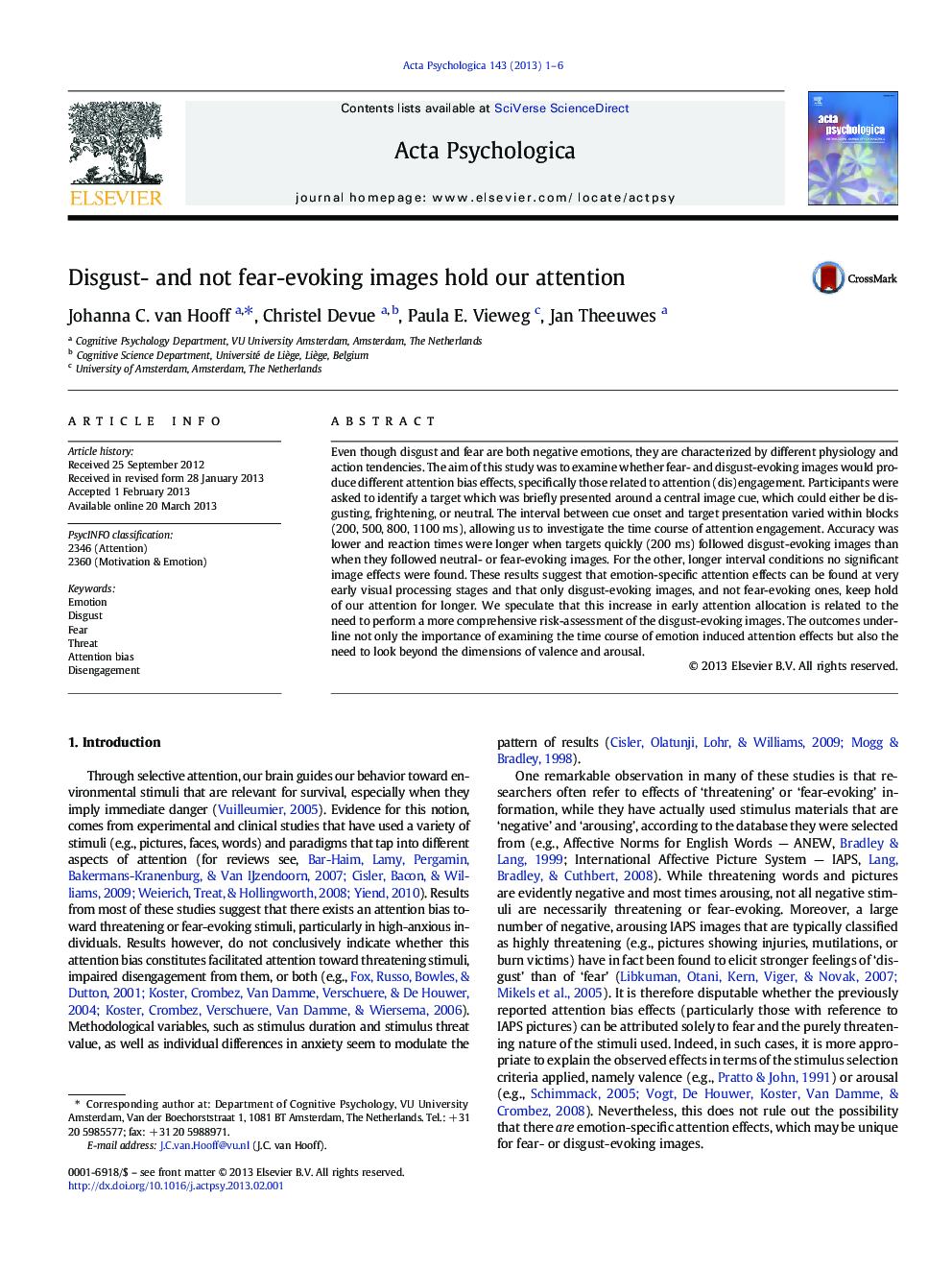| Article ID | Journal | Published Year | Pages | File Type |
|---|---|---|---|---|
| 919857 | Acta Psychologica | 2013 | 6 Pages |
Even though disgust and fear are both negative emotions, they are characterized by different physiology and action tendencies. The aim of this study was to examine whether fear- and disgust-evoking images would produce different attention bias effects, specifically those related to attention (dis)engagement. Participants were asked to identify a target which was briefly presented around a central image cue, which could either be disgusting, frightening, or neutral. The interval between cue onset and target presentation varied within blocks (200, 500, 800, 1100 ms), allowing us to investigate the time course of attention engagement. Accuracy was lower and reaction times were longer when targets quickly (200 ms) followed disgust-evoking images than when they followed neutral- or fear-evoking images. For the other, longer interval conditions no significant image effects were found. These results suggest that emotion-specific attention effects can be found at very early visual processing stages and that only disgust-evoking images, and not fear-evoking ones, keep hold of our attention for longer. We speculate that this increase in early attention allocation is related to the need to perform a more comprehensive risk-assessment of the disgust-evoking images. The outcomes underline not only the importance of examining the time course of emotion induced attention effects but also the need to look beyond the dimensions of valence and arousal.
► Time course of attention engagement was examined for two types of negative emotions. ► Emotion-specific attention effects were found at early visual processing stages. ► Increased attention engagement was present for disgust-evoking pictures only. ► Fear-evoking pictures did not show any evidence for increased attention engagement. ► Valence and arousal are not sufficient to explain emotion-guided attention effects.
